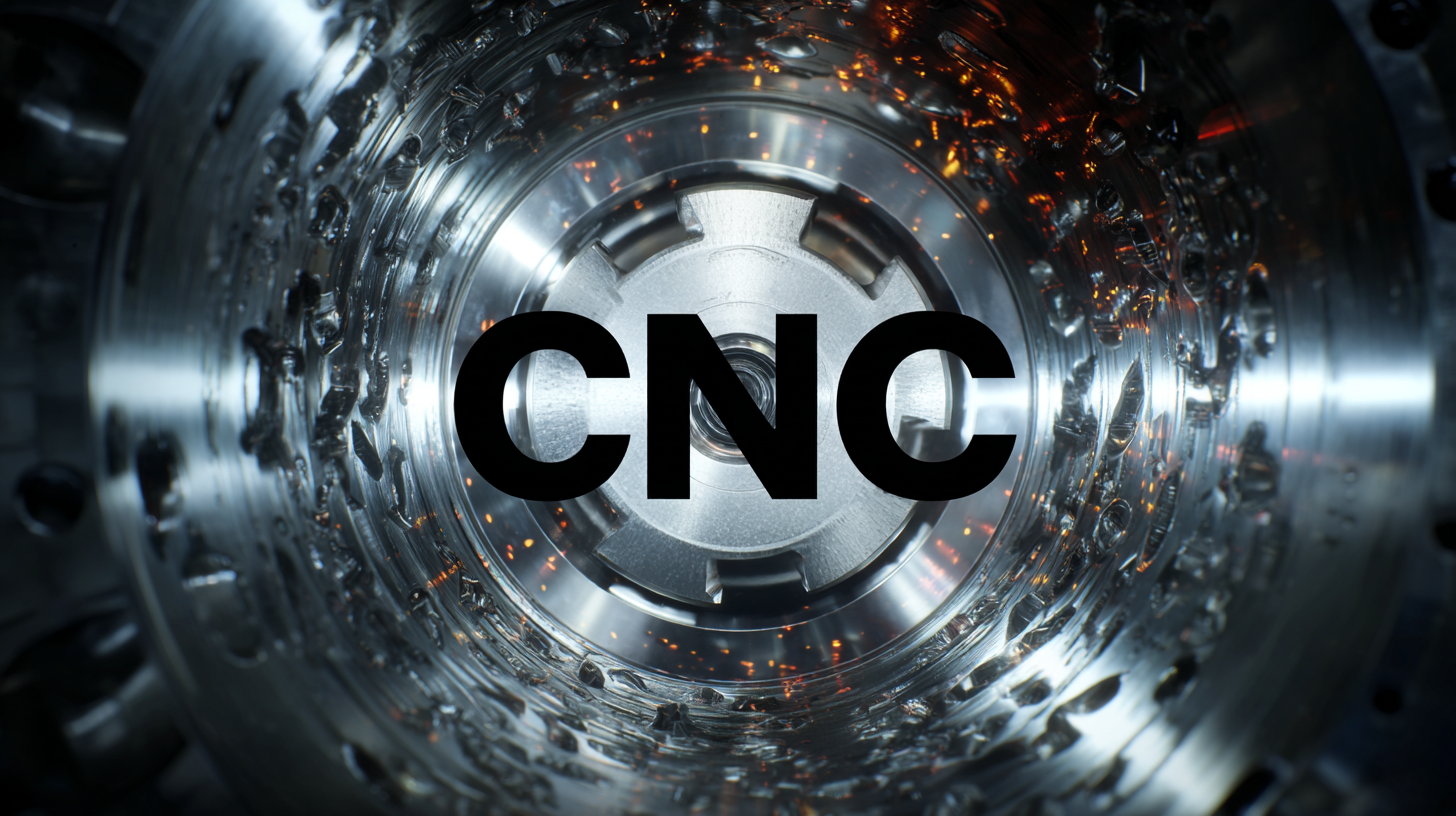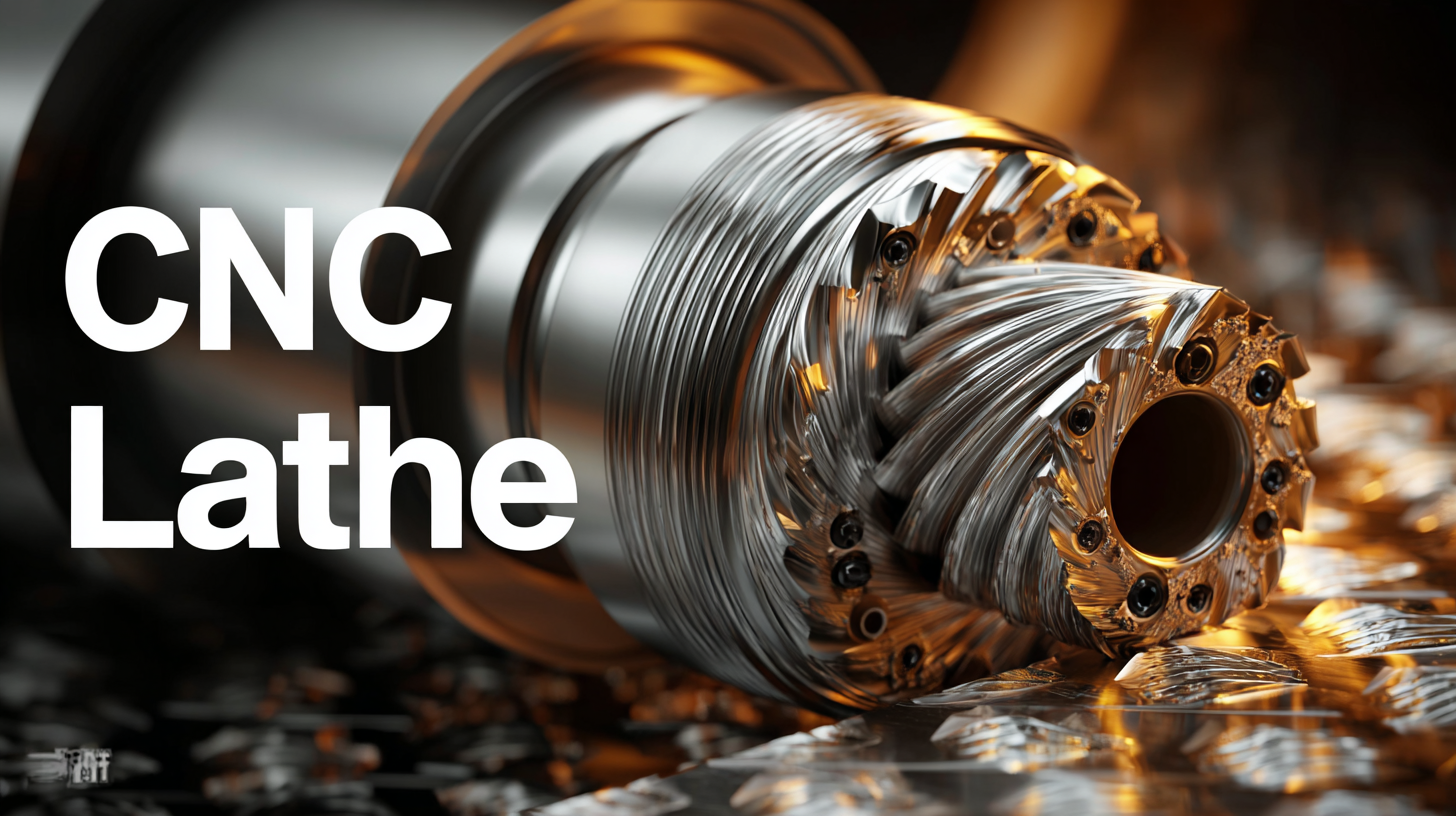Market Trends for Best CNC Lathe by 2025 and the Future of Advanced Machining Technologies
The landscape of advanced machining technologies is rapidly evolving, particularly with the increasing adoption of CNC lathe systems that are pivotal in modern manufacturing. According to a recent report by MarketsandMarkets, the global CNC lathe market is projected to reach USD 13.5 billion by 2025, showcasing a compound annual growth rate (CAGR) of 6.5% from 2020 to 2025. This surge is driven by the demand for precision tools and automation across various sectors, including automotive and aerospace. Moreover, advancements in Industry 4.0 and smart manufacturing are further propelling the integration of CNC lathes, making them more efficient and versatile. As we delve into market trends and consumer preferences, it's essential to explore how these developments herald a new era in machining technologies, particularly from China's high-quality manufacturing hubs that are setting benchmarks globally.

Emerging Market Trends for CNC Lathes Leading to 2025
As we look towards 2025, the market for CNC lathes is evolving rapidly, driven by advancements in technology and shifting industry needs. One of the most prominent trends is the increasing integration of automation and robotics into CNC lathe operations. Manufacturers are seeking ways to enhance productivity and efficiency, leading to the adoption of automated loading and unloading systems. This not only reduces labor costs but also minimizes human error, resulting in higher precision and faster turnaround times.
Another significant trend is the rise of programmable CNC lathes equipped with AI and machine learning capabilities. These advanced machines allow for smarter manufacturing processes, where real-time data analysis and predictive maintenance contribute to optimized productivity. Additionally, the demand for customizable and versatile CNC lathes is growing, as businesses require machines that can adapt to various production needs while maintaining high performance. With these trends shaping the landscape, the future of CNC lathe technology promises to be more innovative and efficient than ever before.
Key Innovations Transforming Advanced Machining Technologies
The landscape of advanced machining technologies is rapidly evolving, driven by key innovations that align with the global trend towards sustainability. As industries face increasing pressure to adopt green technologies, the integration of CNC lathe machines with smart technology and IoT capabilities is a vital step. Reports indicate that by 2025, the market for CNC machines is expected to reach approximately $12 billion, with a significant portion attributed to innovations facilitating eco-friendly manufacturing practices.
The second China International Advanced Manufacturing Technology Exhibition (AMTech2023) underlines this shift, emphasizing the role of "lighthouse factories" which leverage advanced machining solutions to enhance productivity while minimizing environmental impacts. With the rapid growth in the number of these facilities, diverse industries including automotive and electronics are witnessing a paradigm shift towards sustainable practices that not only elevate production efficiency but also contribute to a modernized industrial framework.
Furthermore, a recent analysis highlights that the focus on high-value, technology-advanced sectors is crucial in reshaping global supply chains and addressing the challenges posed by industry shifts, particularly under the influence of policy changes in major markets. This transformation underscores the imperative for manufacturers to adopt innovative machining technologies that foster a greener, more resilient economy.
Market Trends for Best CNC Lathe by 2025 and the Future of Advanced Machining Technologies
| Year | Market Size (USD Billion) | Growth Rate (%) | Key Innovations | Adoption Rate (%) |
|---|---|---|---|---|
| 2023 | 5.2 | 8.5 | IoT Integration, AI Algorithms | 35 |
| 2024 | 5.6 | 7.6 | Automation Features, Enhanced Software | 40 |
| 2025 | 6.0 | 7.3 | Smart Tools, Predictive Maintenance | 45 |
Top Strategies for Choosing the Right CNC Lathe for Your Business
When selecting the right CNC lathe for your business, it's essential to understand the
evolving market trends and
technological advancements in the machining industry. As we approach 2025, the demand for
higher precision and efficiency in CNC lathes has never been greater.
 Modern machines, like twin-spindle lathes, are integrating
advanced automation and
simultaneous machining capabilities, making them an attractive option for
increased productivity and
reduced cycle times. Businesses must keep a close eye on these innovations to remain competitive and meet the needs of their clients.
Modern machines, like twin-spindle lathes, are integrating
advanced automation and
simultaneous machining capabilities, making them an attractive option for
increased productivity and
reduced cycle times. Businesses must keep a close eye on these innovations to remain competitive and meet the needs of their clients.
Investing in a CNC lathe also requires a strategic approach. Companies should prioritize machines that offer adaptability for various applications, such as those designed for both common tasks and specialized projects. The recent introduction of versatile brake lathe adapters showcases the importance of flexibility in operations. Furthermore, the rise of consumer-friendly acoustic lathes demonstrates that there is a growing market for personalized and custom products. By considering these factors and trends, businesses can make informed decisions that align with their growth objectives and the future of advanced machining technologies.
Impact of Automation on CNC Lathe Performance and Efficiency
The advent of automation is significantly transforming the landscape of CNC lathe performance and efficiency. As industries increasingly adopt advanced machining technologies, the integration of digital tools is becoming essential for maximizing production capabilities. Automation not only enhances precision and reduces human error but also streamlines workflows, allowing manufacturers to operate with unprecedented speed and quality. With projections indicating the global CNC machine market will surge to nearly $200 billion by 2032, it is clear that automation is a cornerstone of this growth.
Digitalization platforms are emerging as key players in this evolution, offering sophisticated solutions that optimize machining processes. Such platforms can assist operators in real-time monitoring and predictive maintenance, bolstering both the efficiency of machine tools and the overall productivity of workshop environments. As businesses strive to remain competitive, embracing these automated technologies will be crucial, enabling them to deliver higher performance and meet the ever-increasing demands of the market. The future of CNC lathes lies in the seamless melding of automation and advanced software, setting a new standard for the industry.
Market Trends for CNC Lathes by 2025
This bar chart represents the projected market growth of CNC lathes from 2023 to 2025 based on the influence of automation technologies on performance and efficiency.
Future Predictions: Advanced Materials and Their Role in Machining
The landscape of machining technologies is rapidly evolving, particularly with the integration of advanced materials. According to a report from Grand View Research, the global advanced materials market is projected to reach USD 101.5 billion by 2025, driven by the growing demand for innovative manufacturing processes. CNC lathes, in particular, will leverage these advanced materials to enhance precision and performance, enabling manufacturers to produce more complex components with greater efficiency.

One key player in this transformation is the introduction of composites and nanomaterials. These materials offer superior strength-to-weight ratios and enhanced thermal and chemical resistance, essential for high-performance applications in industries such as aerospace and automotive.
The use of advanced coatings and alloys, as highlighted in various industry analyses, is also set to revolutionize CNC machining, allowing for longer tool life and increased cutting speeds. As we look towards 2025, the emphasis on integrating these materials within CNC lathe technologies will not only improve product quality but also support sustainable manufacturing practices by reducing waste and energy consumption.